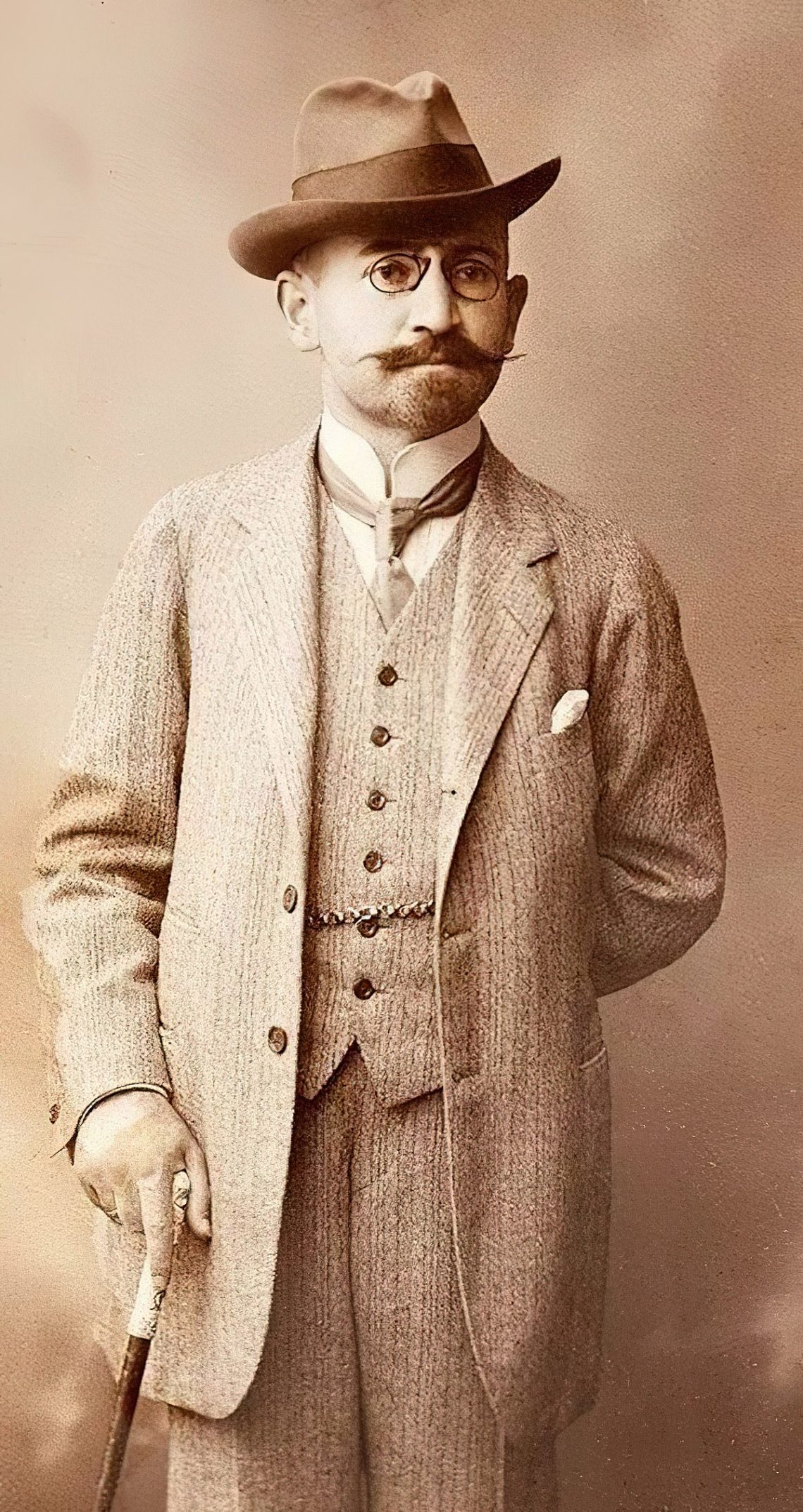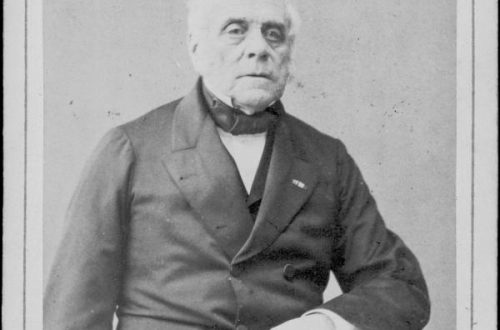
Alexander Afanasyevich Spendiarov |
Alexander Spendiarov
A. A. Spendiarov was always close and dear to me as a highly talented original composer and as a musician with an impeccable, widely versatile technique. … In the music of A. A. one can feel the freshness of inspiration, the fragrance of color, the sincerity and elegance of thought and the perfection of decoration. A. Glazunov
A. Spendiarov went down in history as a classic of Armenian music, who laid the foundations of national symphony and created one of the best national operas. He also played an outstanding role in the formation of the Armenian school of composers. Having organically implemented the traditions of Russian epic symphonism (A. Borodin, N. Rimsky-Korsakov, A. Lyadov) on a national basis, he expanded the ideological, figurative, thematic, genre range of Armenian music, enriched its expressive means.
“Of the musical influences during my infancy and adolescence,” recalls Spendiarov, “the strongest was my mother’s piano playing, which I loved to listen to and which undoubtedly awakened in me an early love of music.” Despite the early manifested creative abilities, he began to study music relatively late – at the age of nine. Learning to play the piano soon gave way to violin lessons. The first creative experiments of Spendiarov belong to the years of study in the Simferopol gymnasium: he tries to compose dances, marches, romances.
In 1880, Spendiarov entered Moscow University, studied at the Faculty of Law and at the same time continued to study the violin, playing in the student orchestra. From the conductor of this orchestra, N. Klenovsky, Spendiarov takes lessons in theory, composition, and after graduating from the university (1896) he goes to St. Petersburg and for four years masters the composition course with N. Rimsky-Korsakov.
Already during his studies, Spendiarov wrote a number of vocal and instrumental pieces, which immediately gained wide popularity. Among them are the romances “Oriental Melody” (“To the Rose”) and “Oriental Lullaby Song”, “Concert Overture” (1900). During these years, Spendiarov met A. Glazunov, A. Lyadov, N. Tigranyan. Acquaintance develops into a great friendship, preserved until the end of life. Since 1900, Spendiarov has mainly lived in the Crimea (Yalta, Feodosia, Sudak). Here he communicates with prominent representatives of Russian artistic culture: M. Gorky, A. Chekhov, L. Tolstoy, I. Bunin, F. Chaliapin, S. Rakhmaninov. Spendiarov’s guests were A. Glazunov, F. Blumenfeld, opera singers E. Zbrueva and E. Mravina.
In 1902, while in Yalta, Gorky introduced Spendiarov to his poem “The Fisherman and the Fairy” and offered it as a plot. Soon, on its basis, one of the composer’s best vocal works was composed – a ballad for bass and orchestra, performed by Chaliapin in the summer of that year at one of the musical evenings. Spendiarov turned to Gorky’s work again in 1910, he composed the melodeclamation “Edelweiss” based on the text from the play “Summer Residents”, thereby expressing his advanced political views. In this regard, it is also characteristic that in 1905 Spendiarov published an open letter in protest against the dismissal of N. Rimsky-Korsakov from the professorship of the St. Petersburg Conservatory. The memory of the dear teacher is dedicated to “Funeral Prelude” (1908).
On the initiative of C. Cui, in the summer of 1903, Spendiarov made his conducting debut in Yalta, successfully performing the first series of Crimean Sketches. Being an excellent interpreter of his own compositions, he subsequently repeatedly performed as a conductor in the cities of Russia and the Transcaucasus, in Moscow and St. Petersburg.
Interest in the music of the peoples inhabiting the Crimea, especially the Armenians and Crimean Tatars, was embodied by Spendiarov in a number of vocal and symphonic works. Genuine melodies of the Crimean Tatars were used in one of the best and repertoire works of the composer in two series of “Crimean Sketches” for orchestra (1903, 1912). Based on the novel by X. Abovyan “Wounds of Armenia”, at the beginning of the First World War, the heroic song “There, there, on the field of honor” was composed. The cover for the published work was designed by M. Saryan, which served as an occasion for the personal acquaintance of two glorious representatives of Armenian culture. They donated funds from this publication to the committee for assistance to the victims of the war in Turkey. Spendiarov embodied the motive of the tragedy of the Armenian people (genocide) in the heroic-patriotic aria for baritone and orchestra “To Armenia” to the verses of I. Ionisyan. These works had a milestone in the work of Spendiarov and paved the way for the creation of the heroic-patriotic opera “Almast” based on the plot of the poem “The Capture of Tmkabert” by O. Tumanyan, which tells about the liberation struggle of the Armenian people in the XNUMXth century. against the Persian conquerors. M. Saryan helped Spendiarov in the search for a libretto, introducing the composer in Tbilisi to the poet O. Tumanyan. The script was written together, and the libretto was written by the poetess S. Parnok.
Before starting to compose the opera, Spendiarov began to accumulate material: he collected Armenian and Persian folk and ashug melodies, got acquainted with arrangements of various samples of oriental music. Direct work on the opera began later and was completed after Spendiarov moved to Yerevan in 1924 at the invitation of the government of Soviet Armenia.
The last period of Spendiarov’s creative activity is associated with active participation in the construction of a young Soviet musical culture. In the Crimea (in Sudak) he works in the department of public education and teaches in a music studio, directs amateur choirs and orchestras, processes Russian and Ukrainian folk songs. His activities are resumed as a conductor of author’s concerts organized in the cities of the Crimea, in Moscow and Leningrad. In a concert held in the Great Hall of the Leningrad Philharmonic on December 5, 1923, along with the symphonic picture “Three Palm Trees”, the second series of “Crimean Sketches” and “Lullaby”, the first suite from the opera “Almast” was performed for the first time, which caused favorable responses from critics .
Moving to Armenia (Yerevan) had a significant impact on the further direction of Spendiarov’s creative activity. He teaches at the conservatory, participates in the organization of the first symphony orchestra in Armenia, and continues to act as a conductor. With the same enthusiasm, the composer records and studies Armenian folk music, and appears in print.
Spendiarov brought up many students who later became famous Soviet composers. These are N. Chemberdzhi, L. Khodja-Einatov, S. Balasanyan and others. He was one of the first to appreciate and support the talent of A. Khachaturian. Spendiarov’s fruitful pedagogical and musical and social activities did not prevent the further flourishing of his composer’s work. It was in recent years that he created a number of his best works, including a wonderful example of the national symphony “Erivan Etudes” (1925) and the opera “Almast” (1928). Spendiarov was full of creative plans: the concept of the symphony “Sevan”, the symphony-cantata “Armenia”, in which the composer wanted to reflect the historical fate of his native people, matured. But these plans were not destined to come true. In April 1928, Spendiarov caught a bad cold, fell ill with pneumonia, and on May 7 he died. The ashes of the composer are buried in the garden in front of the Yerevan Opera House named after him.
Creativity Spendiarov inherent craving for the embodiment of nationally characteristic genre paintings of nature, folk life. His music captivates with the mood of soft light lyricism. At the same time, the motives of social protest, adamant faith in the coming liberation and the happiness of his long-suffering people permeate a number of remarkable works of the composer. With his work, Spendiarov raised Armenian music to a higher level of professionalism, deepened the Armenian-Russian musical ties, enriched the national musical culture with the artistic experience of Russian classics.
D. Arutyunov





